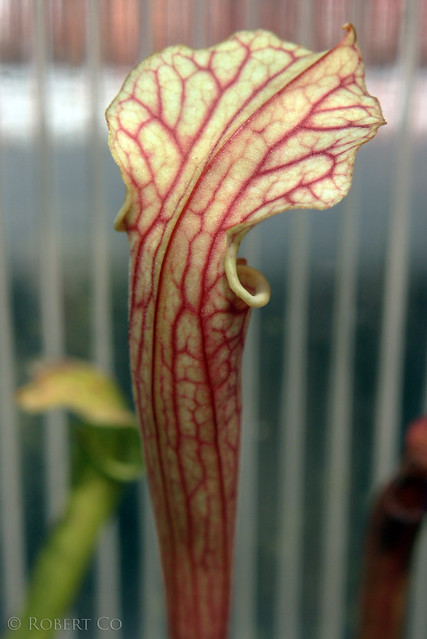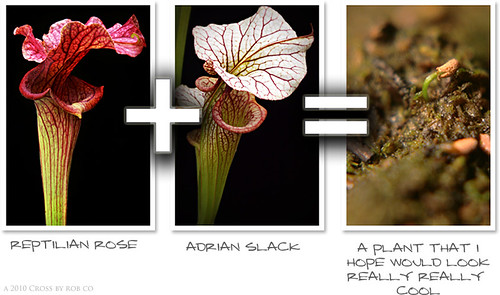Howdy y’all! I was just going through some old archived garden photos and found a few of my early Sarracenia ones! Photos below from 2004 – 2006, when I used to live in San Francisco. I moved from one unit with a small patio, to another larger unit with a slightly larger patio while living at this complex for a few years. Anyway, given my limited space, I still was able to grow a lot of cool things there. Just wanted to share a few of these photos with you! 😉
 May 27, 2006. This should give you an idea of what my patios were like when I lived at the 2 different condos in SF. Lots of plant diversity could be found here. Notice the Sarracenia in the back, by the cacti.
May 27, 2006. This should give you an idea of what my patios were like when I lived at the 2 different condos in SF. Lots of plant diversity could be found here. Notice the Sarracenia in the back, by the cacti.
 May 28, 2004. One of my first Sarracenia photographs. I was fortunate enough to have this Sarracenia catesbaei grow in this quasi terrarium for a couple years. Hey, I didn’t know any better! I did grow this plant outdoors though, so that did help a lot. I let the pitchers grow out of the top.
May 28, 2004. One of my first Sarracenia photographs. I was fortunate enough to have this Sarracenia catesbaei grow in this quasi terrarium for a couple years. Hey, I didn’t know any better! I did grow this plant outdoors though, so that did help a lot. I let the pitchers grow out of the top.
 April 11, 2005. More quasi open terrarium action. Sarracenia ‘Scarlet Belle’ in foreground.
April 11, 2005. More quasi open terrarium action. Sarracenia ‘Scarlet Belle’ in foreground.
Sarracenia catesbaei in the back. There’s even that little Drosera capesis flower stalk there too… yay.
 August 24, 2005. Various Sarracenia around the garden.
August 24, 2005. Various Sarracenia around the garden.
 May 21, 2006. Again note the floral diversity and the Sarracenia pitchers growing behind the cacti/succulents and Ginko biloba. Yes, that aquarium is filled with water plants. Yes, so is that really cool moss lined barrel that I made in the back ground. (I made 2 of them the other is out of the shot.)
May 21, 2006. Again note the floral diversity and the Sarracenia pitchers growing behind the cacti/succulents and Ginko biloba. Yes, that aquarium is filled with water plants. Yes, so is that really cool moss lined barrel that I made in the back ground. (I made 2 of them the other is out of the shot.)
 May 21, 2006. Another view of the Sarracenia in the patio garden.
May 21, 2006. Another view of the Sarracenia in the patio garden.
















 [Pitcher plant in creation.]
[Pitcher plant in creation.]



